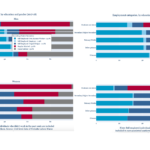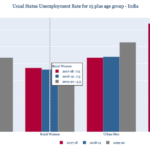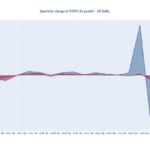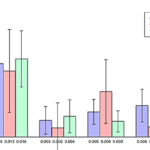Decline In Female Labour Force Participation: Be Cautious How You Interpret It
Ashish Bose noted that data on women workers do not fully capture women’s work (Bose 2004). What accounts for this omission, and how can we address it? Prior research has noted that what is identified as work varies by gender. Activities performed by men are often called “work” by respondents; the same activities, when performed by women, are often seen as an extension of household chores.
Collection of time-use data where respondents enumerate how they spend their day and interviewers classify it as economically productive work or household activities is often recommended as a solution (Hirway 2012). However, this is a challenging task and difficult to implement in multipurpose surveys. An alternative is to train interviewers to ask probing questions. This is feasible in small surveys, but when a large number of interviewers are involved in carrying out surveys, relying on interviewer training to improve the capture of women’s work can be challenging. Is there a way of improving the capture of women’s work through better questionnaire design?
National Council of Applied Economic Research’s National Data Innovation Centre set out to develop and test a data collection module that would allow for better capture of women’s work within a standardized survey design. Detailed results from this survey design experiment are available and NCAER-NDIC Measurement Brief (Deshmukh et al. 2020). Below we summarize some of the observations from this brief.
Methodology:
Labour force surveys such as those carried out by Indian National Sample Surveys ask about usual principal activity status over the a majority of the preceding 365 days in which individuals are first categorized as those in the labour force and those not in the labour force, and then the details of activities are collected. In addition to the major time criterion, individuals who were pursuing economic activities for a period of at least 30 days are classified as being in the labour force according to usual subsidiary activity status.
In contrast to this approach, which we define as “status listing”, it is also possible to ask households about individuals who engage in a predefined and exhaustive set of activities and the time they spend in each activity. Based on these answers, analysts can classify various individuals as being employed or not employed. This approach, defined as “activity listing” may inspire respondents to think differently.
We tested these alternative formulations as a part of the Delhi Metropolitan Area Study (DMAS). DMAS interviewed 5,252 households, containing 27,428 individuals residing in 12 of 31 districts of Delhi National Capital Region across the four states, covering both urban and rural areas
At the start of the interview, the respondents were asked:
- What was the primary activity status of different household members over the past 12 months?
- What is the secondary activity that they undertook, which lasted for at least 30 days?
These questions are identical to the questions included in the National Sample Survey. However, they were followed up by questions that led the respondent through different sources from which the household derived its income and, after each source of income, asked which household members participated in this activity and how much time they committed to it.
These activity based questions capture data on:
- Who are the household members that worked on family farm?
- Who are the household members that took care of livestock?
- Who are the household members that participated in family business?
- Who are the household members that participated in farm or non-farm wage work?
The difference between status based questions included in the labour force surveys and activity based questions included in the experimental approach lies in ensuring that the interpretation of what counts as “work” is not left to individuals but instead explicitly defined.
Results:
While the two methods yielded similar work participation rates for men, for women, the difference was substantial. Several results from this experiment are noteworthy:
- Labour force status questions identify fewer women as working than questions that ask about participation in specific activities.
- This difference is particularly large for work on family farms and in caring for livestock, consequently rural estimates are affected more than urban estimates.
- Underestimation of work participation is limited to women and does not affect estimates of men’s work.
About 28% of women were defined as being employed by status listing method, 33% women were defined as being employed by the activity listing method when including only work on the family farm, family business, and wage work. When we add caring for animals to this list, the proportion of women defined as working jumped to 44%.
Much of the overlooked work consists of women’s work on family farms and caring for livestock. This suggests that omission of women’s work using standard labour force survey questions is a problem particularly affecting rural estimates
A substantial body of literature on gender and development (Banerji and Jain 1985) notes that gender norms dictate that male farmers are called farmers, and women farmers are often dubbed family helpers. Thus, standard labour force questions are well suited to capturing men’s labour force activities but are not useful when capturing women’s economic activities.
These results also suggest caution in the interpretation of statistics on the decline in women’s work participation recorded by National Sample Surveys and Periodic Labour Force Survey. While the questions themselves have not changed over time in these surveys, there has been a substantial change in how the surveys have been conducted and the nature of investigators recruited for the surveys. With increased reliance on contract investigators instead of regular staff, it is possible that the investigators do not fully understand what is meant by labour force participation and may carry their gender biases into the field. Thus, some of the recorded declines in women’s work participation in rural areas may be due to increased interviewer error. By clearly identifying the activities for which data is to be collected, the module incorporated in DMAS reduces the potential for interviewer error and bias.
Sonalde Desai is a Professor at NCAER with a joint appointment as Professor of Sociology at the University of Maryland. She directs the NCAER-NDIC
Neerad Deshmukh is a Graduate Student in Sociology at the University of Maryland, College Park
Santanu Pramanik is a Senior Fellow and Deputy Director, NCAER-NDIC
Dinesh Tiwari is an Associate Fellow at NCAER
References:
Banerjee, Nirmala and Devaki Jain. Tyranny of the household: investigative essays on women’s work. Shakti Books, New Delhi
Bose, Ashish. (2004). Towards Gender-Sensitive Population Census: Reflections from Kathmandu. Economic and Political Weekly, 39(17), 1652-1654. Retrieved March 7, 2021, from http://www.jstor.org/stable/4414920
Deshmukh, Neerad, Sonalde Desai, Santanu Pramanik, and Dinesh Tiwari. 2019. “Improving Measurement of Women·s Work Participation: Sensitivity of Work Participation Rates to Questionnaire Design,” NCAER National Data Innovation Centre Measurement Brief No. 2020-1. NCAER, New Delhi.
Hirway, Indira. (2012). “Missing Labour Force: An Explanation.” Economic and Political Weekly 47(37): 67-72.
If you wish to republish this article or use an extract or chart, please read CEDA’s republishing guidelines.










